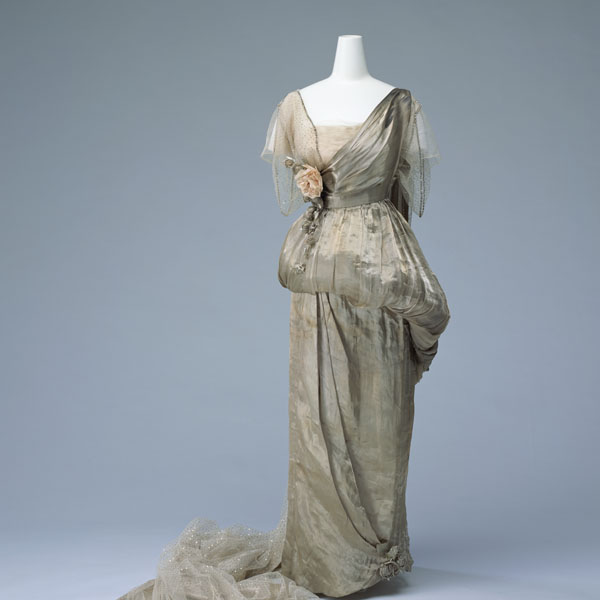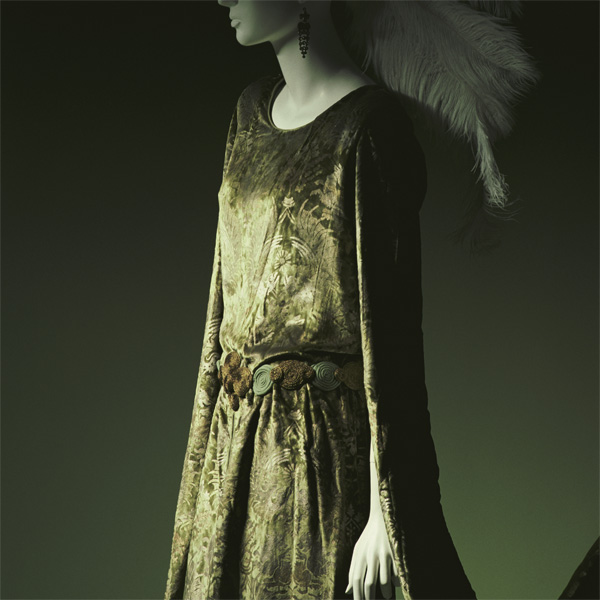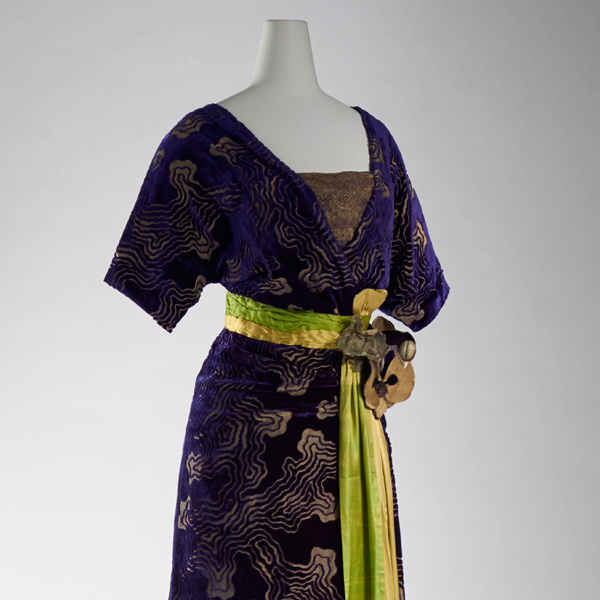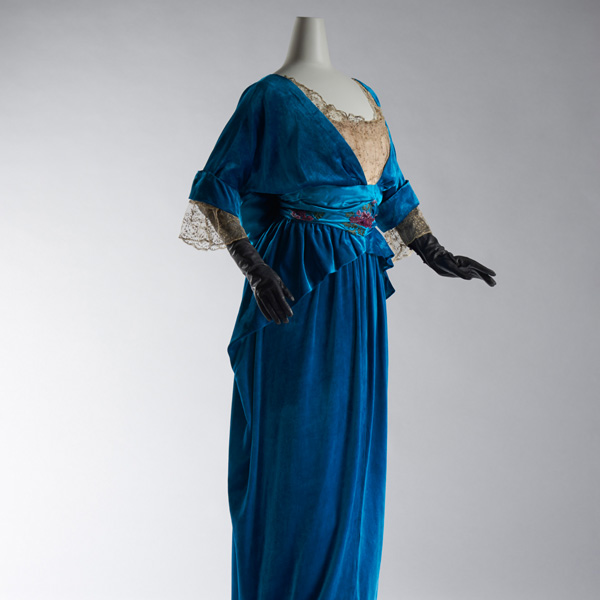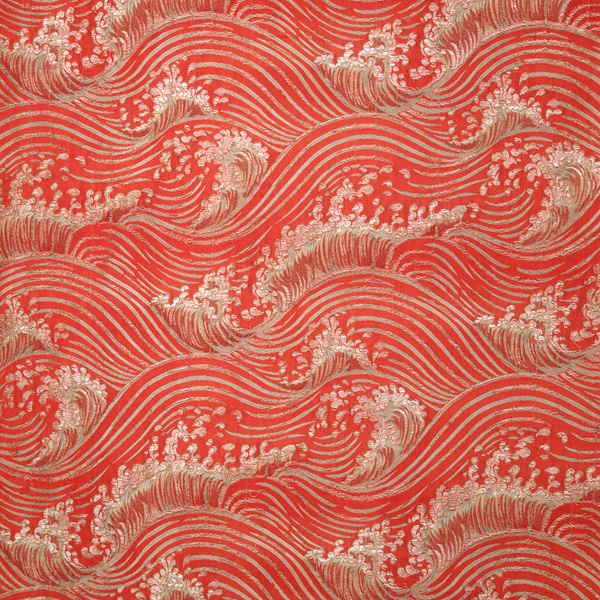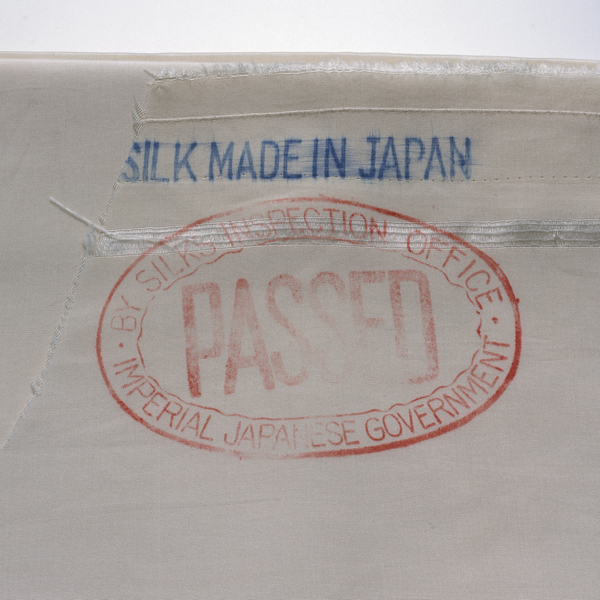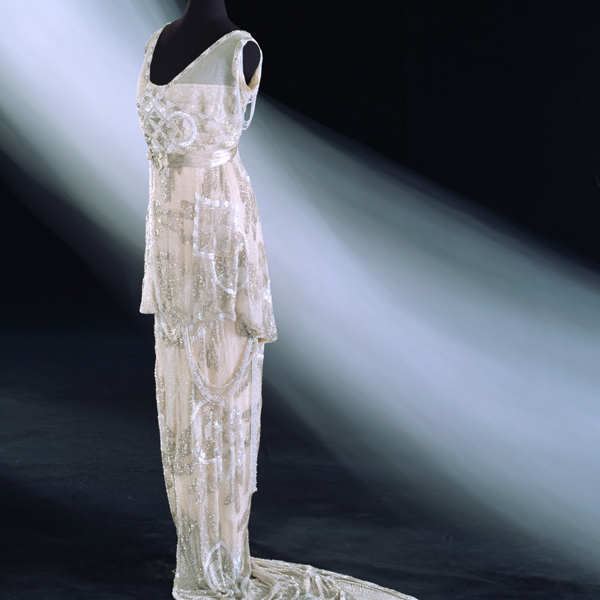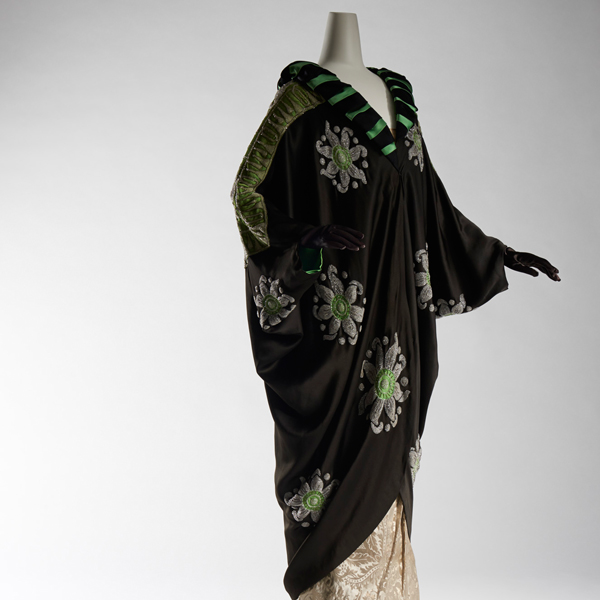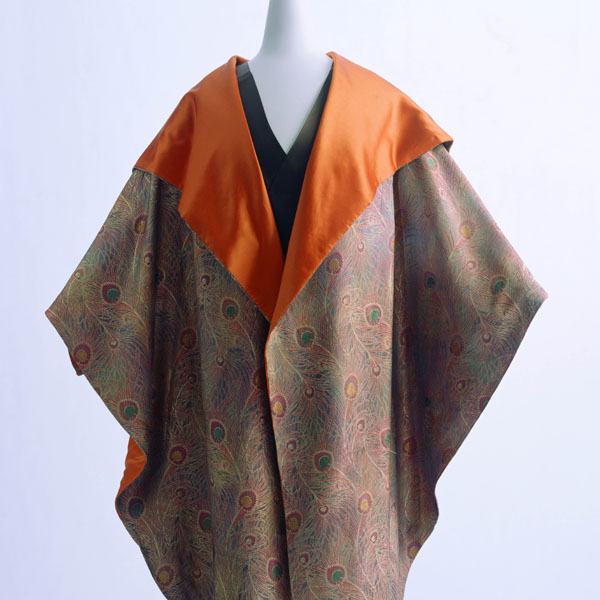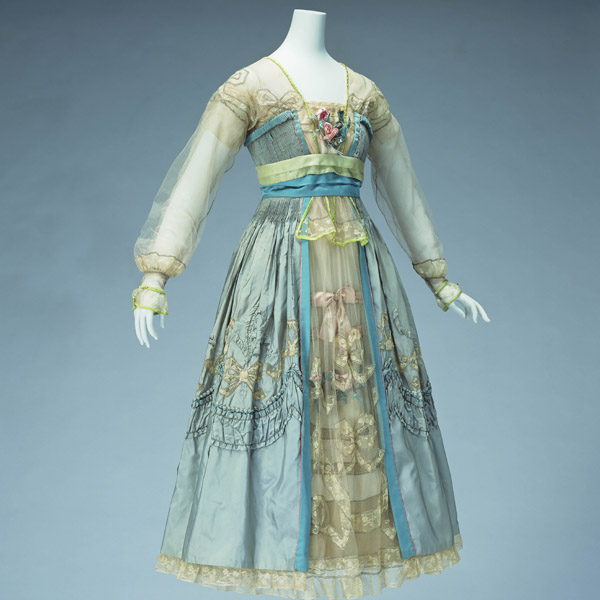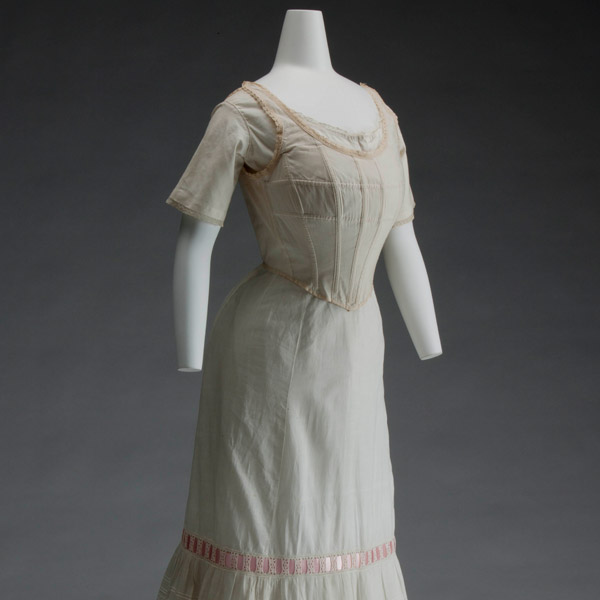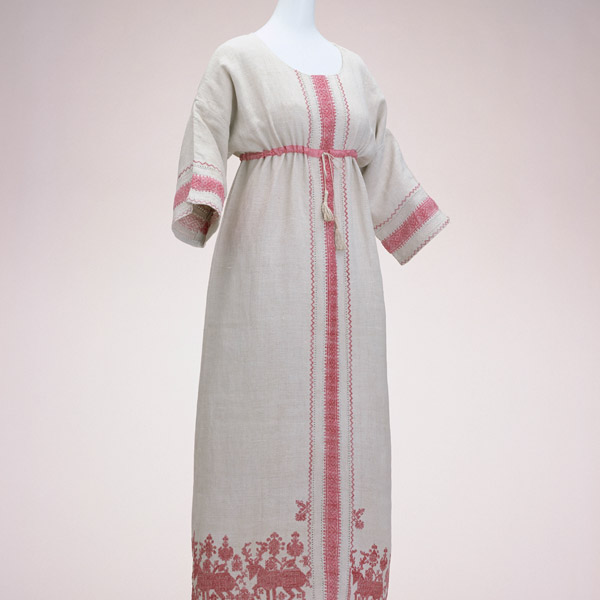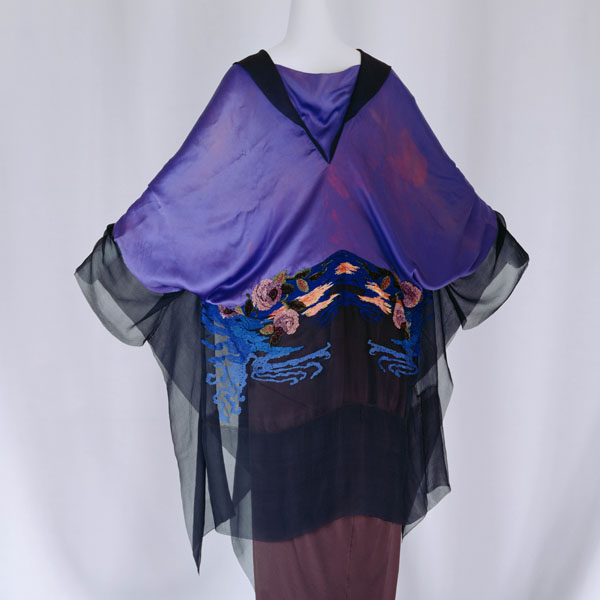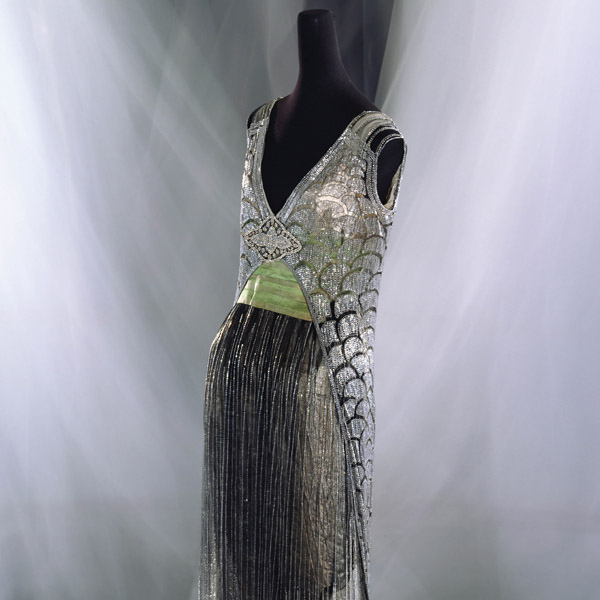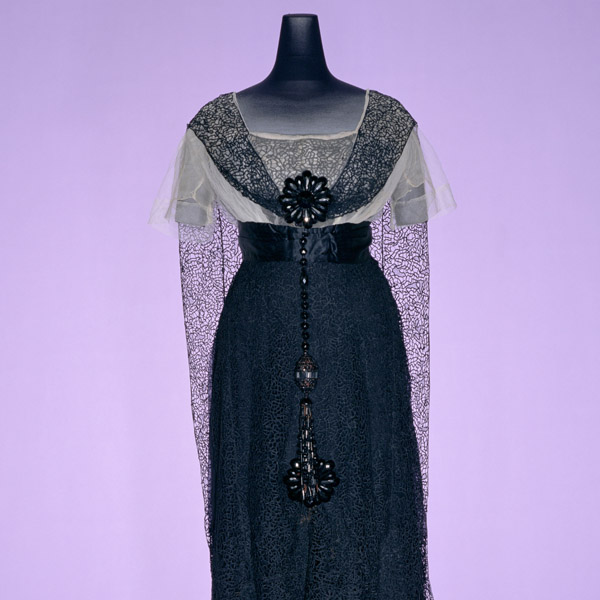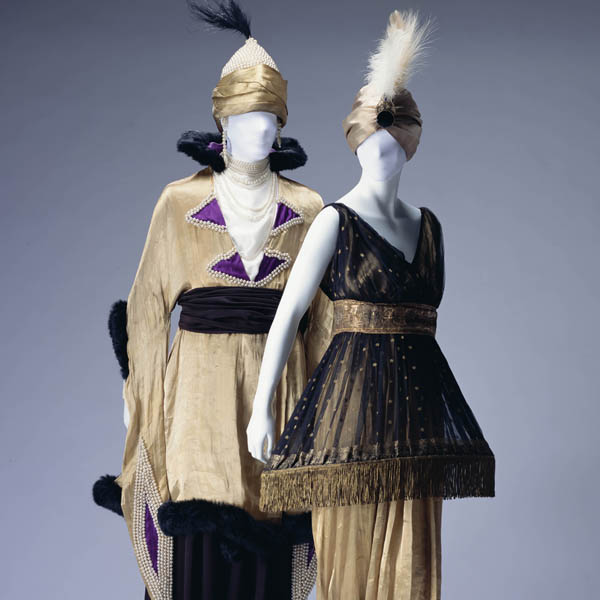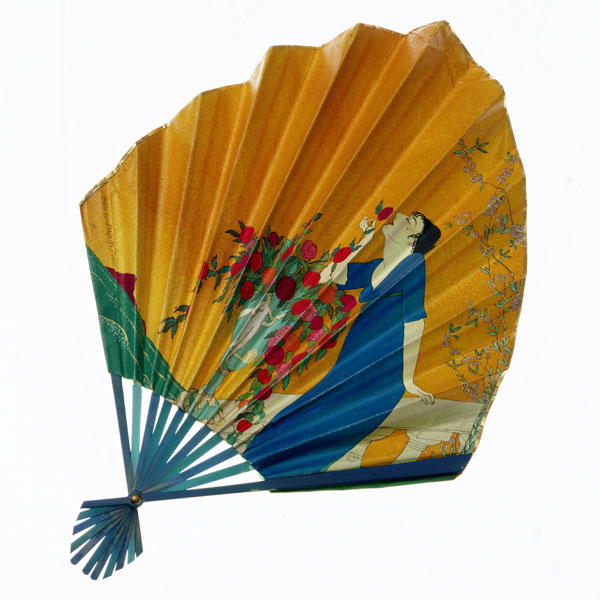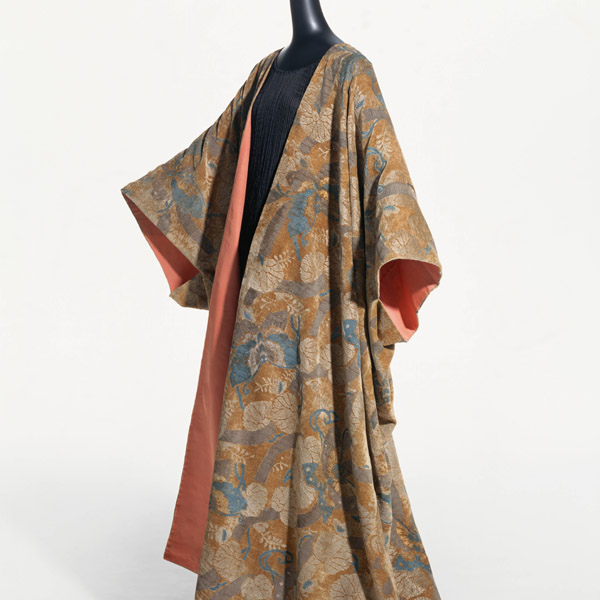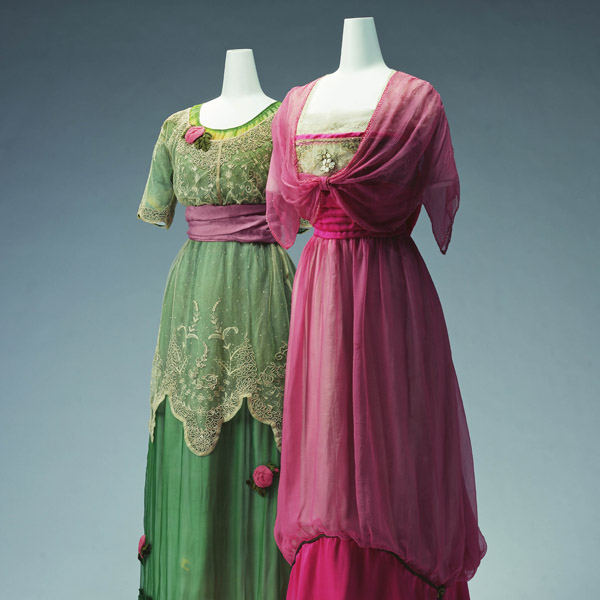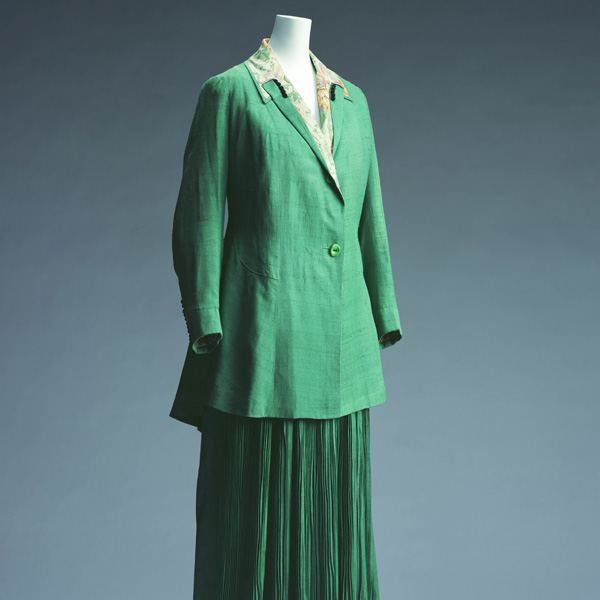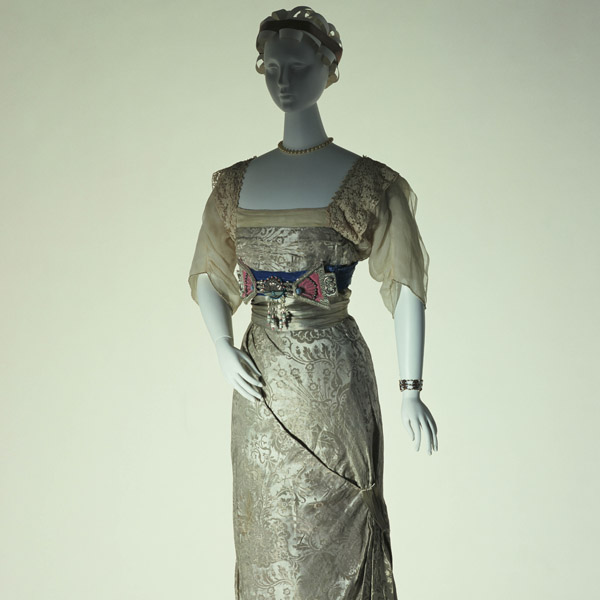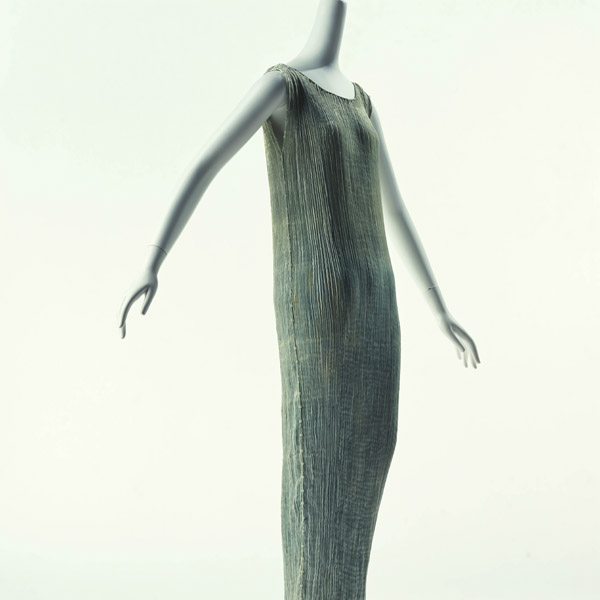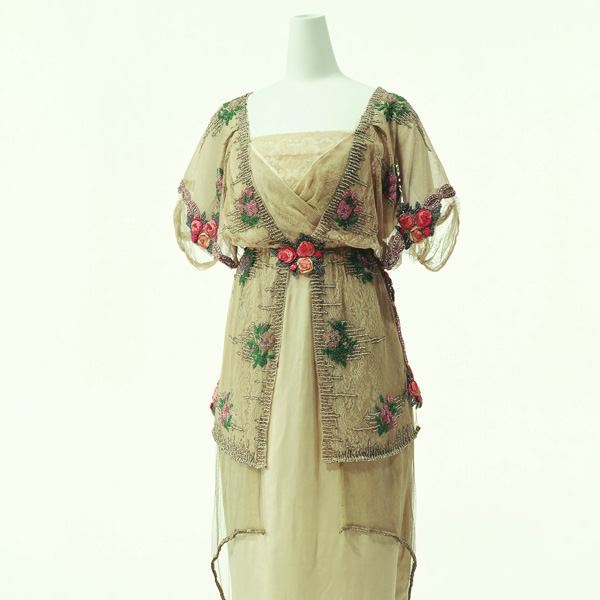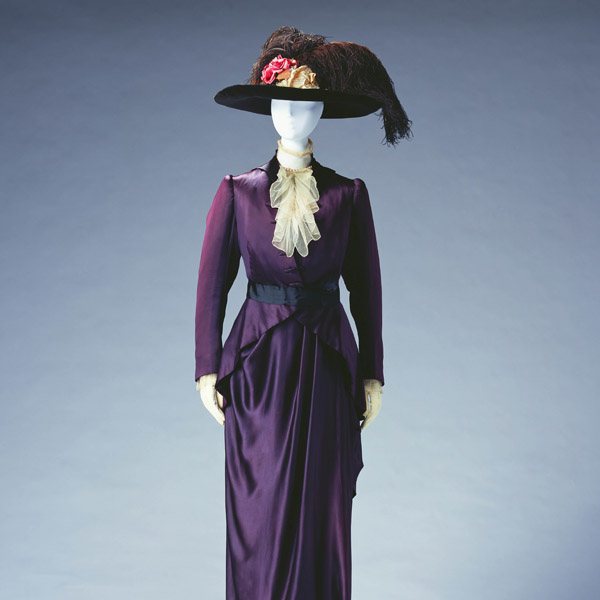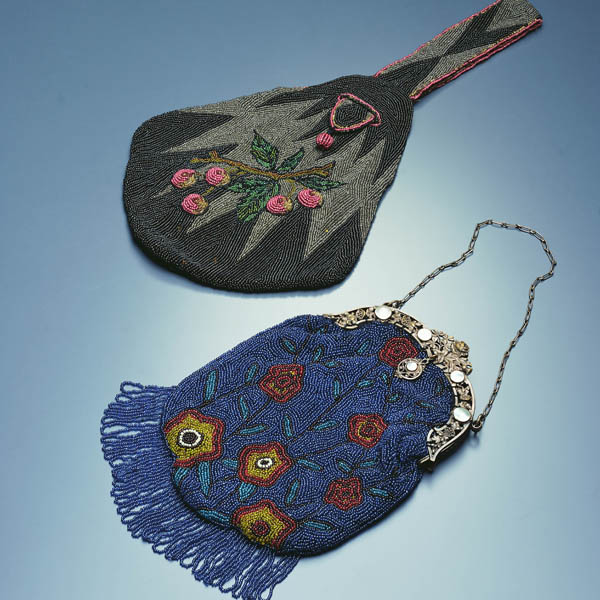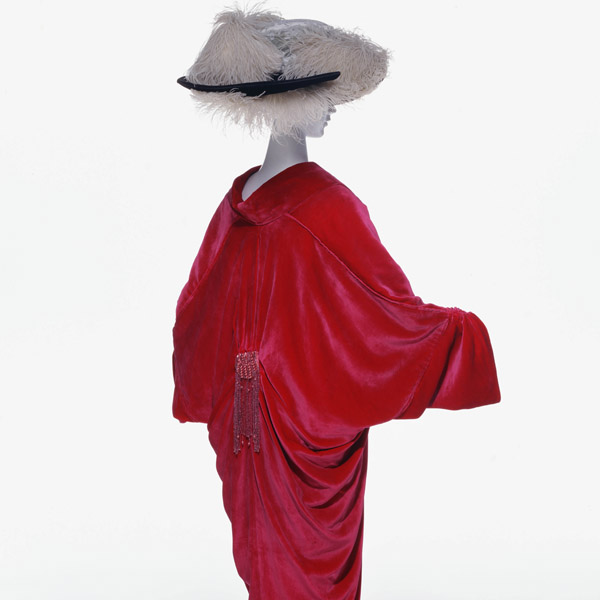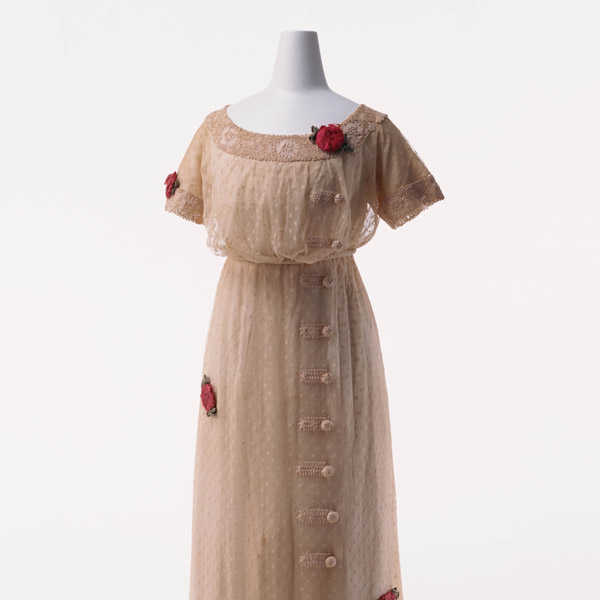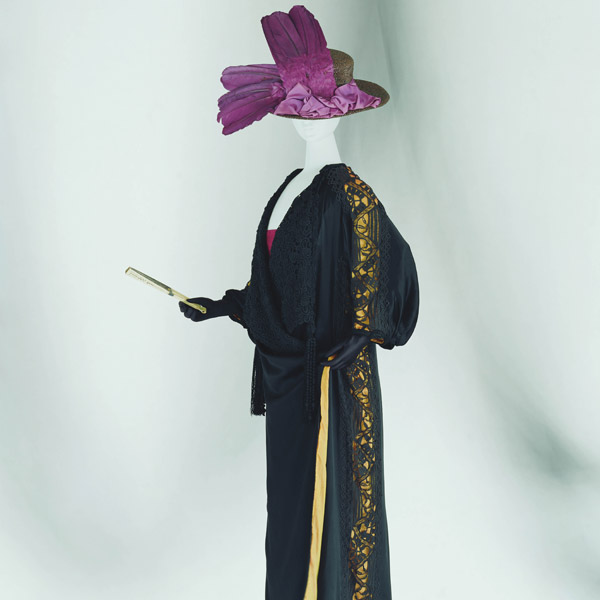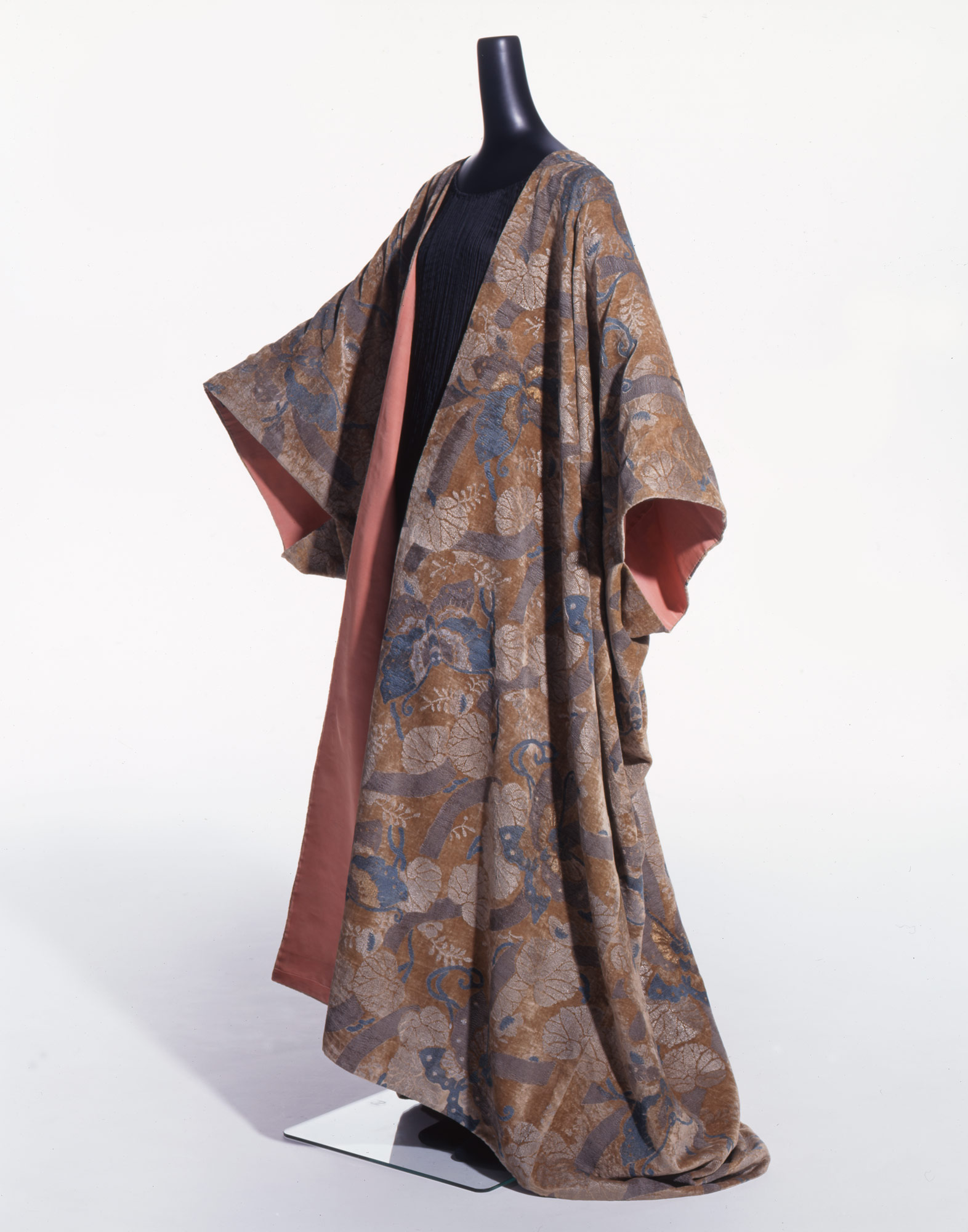
© The Kyoto Costume Institute, photo by Kazumi Kurigami
You can enlarge by putting the mouse cursor on the image.
Kimono Coat
1910s
- Designer
- Mariano Fortuny
- Brand
- Fortuny
- Label
- none
- Material
- Light brown velvet with polychrome stencil print of Japanese traditional pattern; salmon-pink silk faille lining; straight-cut structure.
- Inventory Number(s)
- AC7771 93-19
A gorgeous informal, indoor wear. The "tatewaku" (hourglass line) pattern with butterfly and hollyhock motifs was inspired by a Japanese fabric. Mariano Fortuny sought out pattern design sources from diverse periods and regions, including Japan. The textile for this coat has the almost same design as that of Japanese cut silk velvet for kimono sashes. This Japanese textile was described by the journal "Le Japon artistique" (vol. 2, 1888) and later by "Étoffes Japonaises" (1910) (At present, the original sash textile is housed in Les arts decoratifs, Paris.) For this coat, the pattern is produced by stencil printing.
At the end of the 19th century Western people began to wear Japanese kimonos, which are loose-fitting and liberating, as undress. Kimono-style indoor wear and coats were produced in both Europe and the U.S.
 Digital Archives
Digital Archives